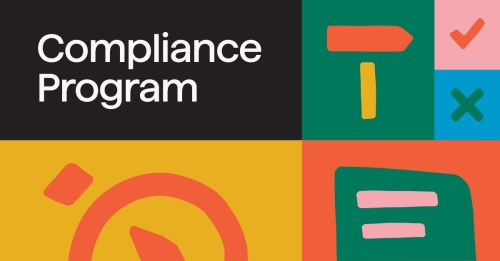Addressing Diversity and Inclusion in Compliance Programs

While the traditional focus of compliance has been on legal frameworks and risk mitigation, a paradigm shift is occurring. Companies are recognizing the imperative need to address diversity and inclusion within their compliance programs.
Diversity and inclusion (D&I) are not merely buzzwords; they represent essential components of a thriving and sustainable corporate culture. In this article, we will explore why addressing diversity and inclusion is crucial in compliance programs, the benefits it brings, and practical strategies for implementing inclusive practices.
The Business Case for Diversity and Inclusion in Compliance
1. Enhanced Decision-Making
A diverse and inclusive team brings together individuals with varied perspectives, experiences, and backgrounds. This diversity enriches the decision-making process within compliance programs. Different viewpoints challenge assumptions, leading to more comprehensive and thoughtful approaches to regulatory adherence.
2. Mitigating Groupthink
Groupthink, the tendency for a group to conform and avoid dissenting opinions, can be detrimental to compliance efforts. Inclusive teams encourage open dialogue and constructive dissent, reducing the risk of overlooking critical regulatory nuances.
3. Reflecting Stakeholder Diversity
Modern businesses operate in diverse global markets, serving customers and engaging with stakeholders from various backgrounds. A compliance program that reflects this diversity is better equipped to understand and navigate the intricacies of different regulatory environments.
4. Attracting and Retaining Talent
A commitment to diversity and inclusion is a powerful magnet for attracting top talent. A diverse workplace is more appealing to individuals seeking an inclusive and equitable environment. Furthermore, an inclusive compliance program fosters a sense of belonging, increasing employee retention.
Practical Strategies for Integrating Diversity and Inclusion in Compliance
1. Inclusive Policies and Procedures
Crafting compliance policies and procedures that explicitly promote diversity and inclusion is a foundational step. Ensure that these policies emphasize equal opportunities, fair treatment, and respect for all employees, regardless of their background.
2. Diverse Compliance Teams
Building diverse compliance teams is essential for addressing the multifaceted challenges of regulatory adherence. Actively seek individuals with diverse backgrounds, experiences, and expertise. This not only enhances the collective skill set but also brings a broader understanding of regulatory nuances.
3. Training and Education
Implement training programs that raise awareness about diversity and inclusion within the compliance context. This includes educating employees on the intersectionality of compliance issues and fostering a culture of empathy and understanding.
4. Inclusive Communication
Promote inclusive communication within the compliance program. Promote a culture that fosters candid conversations, attentive listening, and the sharing of a wide array of perspectives. Establish channels for reporting compliance concerns that prioritize anonymity and protection against retaliation.
5. Regular Diversity Audits
Conduct regular audits to assess the diversity and inclusion within the compliance program. Evaluate representation at all levels, from entry-level positions to leadership roles. Use these audits to identify areas for improvement and track progress over time.
Overcoming Challenges in Implementing D&I in Compliance
1. Resistance to Change
Resistance to change is a common obstacle when integrating diversity and inclusion into established compliance programs. Leadership commitment and communication are crucial in overcoming this resistance. Clearly articulate the benefits and necessity of D&I for the success of compliance initiatives.
2. Unconscious Bias
Addressing unconscious bias is an ongoing challenge. Implement training programs that raise awareness about biases and provide strategies for mitigating their impact. Foster an organizational culture that actively challenges and dismantles biased assumptions.
3. Measurement and Accountability
Establish clear metrics for assessing the impact of diversity and inclusion efforts within the compliance program. Hold leaders and teams accountable for progress, and celebrate achievements. Regularly communicate the importance of D&I and its alignment with the organization's values.




